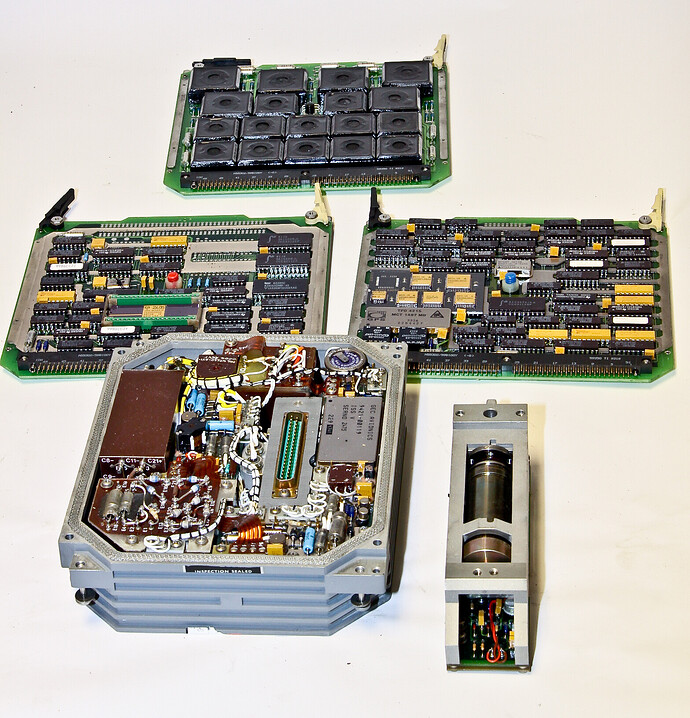The Bendix Central Air Data Computer (CADC) was introduced in 1955 and used in fighter aircraft of the era. It took raw air pressure (static and pitot) and temperature and performed the complex calculations to obtain Mach number, altitude, and airspeed for planes operating in the transonic regime.
How? Mechanically! By Ken Sherriff’s reckoning, with 46 synchros, 511 gears, 820 ball bearings, and a total of 2,781 major parts.
Can the restoration team bring it back to life?
5 Likes
This device is a testament to the power of human collaboration and engineering to solve problems at the bleeding edge of knowledge/technical abilities. I wonder how many man-hours* were required to get it to work reliably.
*knowingly politically incorrect/sexist
2 Likes
We don’t need no stinkin electronics
1 Like
For comparison, the F-14 Central Air Data Computer, (CADC) designed between 1968 and 1970 was the first all-electronic air data computer. It used six custom MOS chips as the processor, running 20 bit fixed point arithmetic. Here is a picture of the guts.
Unlike the Bendix MG-1, the F-14 CADC also had flight control functions, such as controlling wing sweep automatically depending upon speed and altitude.
5 Likes
When I was in college they had a minuteman missile computer sitting in one of my professor’s offices. IIRC all the docs were classified so it was just an ornament, didn’t seem like anybody was interested in reverse engineering. Must have been around 1970. A little giggling says it had fixed point arithmetic with 24b words, and a 12.8KHz clock
1 Like

